17th Borders and Crossings Travel Writing conference
University of Sydney, Australia 20-23 July 2020
Conference theme: ‘Travelling differently’
Conference background
The first of the ‘Borders and Crossings’ conferences, a series devoted to the international, interdisciplinary study of travel writing, was organised by Glenn Hooper and Tim Youngs, and held at Magee College, Derry in 1998. Travel literature was at that time far from mainstream as an area of academic research, but the intervening two decades have witnessed a major shift in attitudes towards the genre, with the emergence of dedicated journals, scholarly associations and other academic apparatus associated with the building of a new field. ‘Borders and Crossings’ has played a catalytic role in these processes as it has provided a forum for scholars across a range of disciplines and from a wide variety of national contexts to meet regularly, to explore an increasingly rich corpus of travel writing, and to debate its centrality to the Arts, Humanities and Social Sciences.
In 2020, the Borders and Crossings conference will come to Australia for the second time (the first was at the University of Melbourne in 2008), and will have as its core theme the idea of differences and diversity in means and experiences of travel.
Call for papers: ‘Travelling differently’
The 2020 conference will take part in a unique context: that of a postcolonial yet white-western dominated member of the ‘Anglosphere’, situated in a South-East Asian and Pacific Island geographical, economic and political context. Contemporary Australia, and its founding settlement of Sydney, epitomise borders and crossings. It is founded on different types of travel: forced and chosen, tourism and exile, appropriation and return, movement of ideas and cultures, movement of species and their shifting environments. We thus invite conference participants to reflect on the theme of ‘travelling differently’. Subthemes can include but are not limited to
- Redefining regions: How have borders changed or are they changing? What makes them more or less porous? What factors impact on who is ‘in’ and who is ‘out’?
- North-north and south-south interactions: Much of our world has been shaped by north-south interactions, but north-north interactions continue to dominate the global cultural conversation at the same time as south-south interactions are emerging as new vehicles for political and cultural exchange.
- Ideas travelling: how do contemporary shifts in political, economic and cultural power impact on the ways in which ideas travel?
- Travelling minorities: in countries like Australia, Indigenous people have travelled lands and continents for millennia, but modern societies create new challenges: those of displacement and ‘exile within’. Other racialised minorities, and indeed women and LGBTI populations, also face different challenges in travelling, whether material (personal safety, less access to the means to travel), psychological, cultural or symbolic.
- Animals travelling: a country like Australia is well-placed to know how the transport of animals around the globe has impacted on ecosystems, cultures and economies in our Anthropocene age. How do animals feature in travel writing? What symbolic roles do they play?
- Forced travelling: asylum seekers, Indigenous peoples, and all others displaced due to a range of natural and human-made catastrophes experience travel differently from those who have a choice in the matter. How is their experience documented and imagined?
- Travelling objects: Humans are collectors—whether purchasers or plunderers—and transporters of things. What do ‘travelling objects’ come to symbolise in the ways we talk and write about travel?
- Repatriation: Travellers—whether human or inanimate, whether exiled or ‘born displaced’, whether in times of war or times of peace—also experience return, in life and after death. What is the place of repatriation in our cultural narratives?
- Travelling words: Languages also travel the globe, often becoming means of literary expression as second or third languages of the writers. Words also travel through translation, or travel from orality to page as written forms are developed for traditional languages. How does the language of expression impact on the ways in which we write and read about travel?
- Travelling images: Our artistic traditions, from visual arts through to performance and cinema, have developed rich hybridities through the travel of styles and models from one culture to another.
- Virtual travel & proxy travel: in our internet-facilitated age, virtual travel is a reality for many, not only vicarious tourism but also the virtual transnational workplace.
- Imagined universes: stories of travel lie at the core of science-fiction and fantasy writing. Indeed, one cannot imagine other universes without travelling to them.
- Philanthropic travelling: our age has seen an explosion of philanthropic travel, and documentation thereof, whether through a growing body of testimony by volunteers working for NGOs or through the ubiquitous imagery of philanthrocapitalists travelling the Third World. When one is ‘travelling for others’, how does the narrative of travel change?
Diseases travelling: From the plague to cholera to AIDS to H1N1 (the virus that caused the pandemics of Spanish flu in 2018-2019 and swine flu in 2009) to Ebola, the world has experienced its share of pandemics. Travelling diseases become imbricated with the history of peoples, cultures, nations, and have often played central roles in travel writing, whether testimonial or fictional.
Teaching travel writing: why, and how, does one ‘teach’ travel writing? What roles does travel writing play in our curricula, whether in literature, foreign languages, area studies, international studies or history?
Deadline for submission of abstracts: 1 March 2020.
For all enquiries contact Conference Convenor Bronwyn Winter: bronwyn.winter@sydney.edu.au


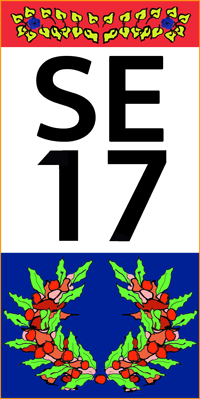
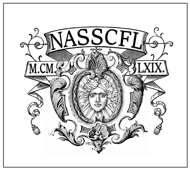
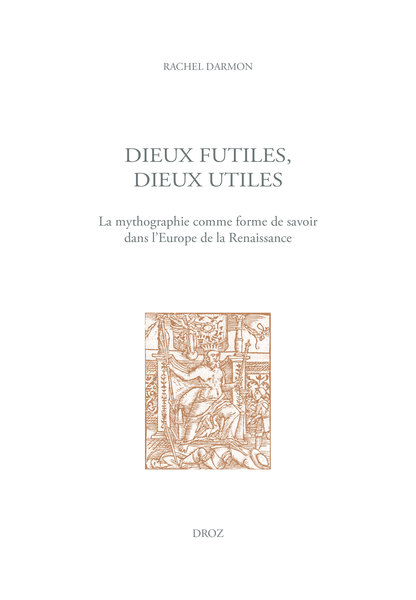 Rachel Darmon, Dieux futiles, dieux utiles La mythographie comme forme de savoir dans l'Europe de la Renaissance, Genève, Droz, 2022.
Rachel Darmon, Dieux futiles, dieux utiles La mythographie comme forme de savoir dans l'Europe de la Renaissance, Genève, Droz, 2022.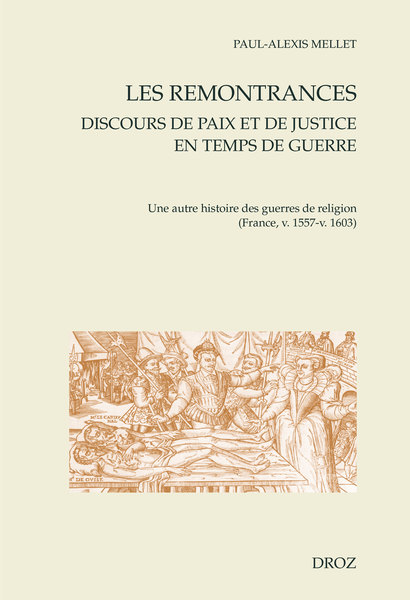 Paul-Alexis MELLET, Les remontrances. Discours de paix et de justice en temps de guerre. Une autre histoire des guerres de religion (France, v. 1557-v. 1603), Genève, Droz, 2022.
Paul-Alexis MELLET, Les remontrances. Discours de paix et de justice en temps de guerre. Une autre histoire des guerres de religion (France, v. 1557-v. 1603), Genève, Droz, 2022.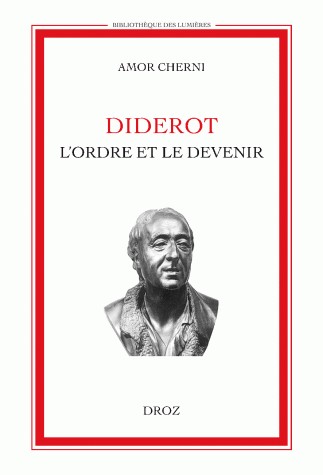 Amor CHERNI, Diderot : L'Ordre et le devenir, Genève, Droz, 2022.
Amor CHERNI, Diderot : L'Ordre et le devenir, Genève, Droz, 2022.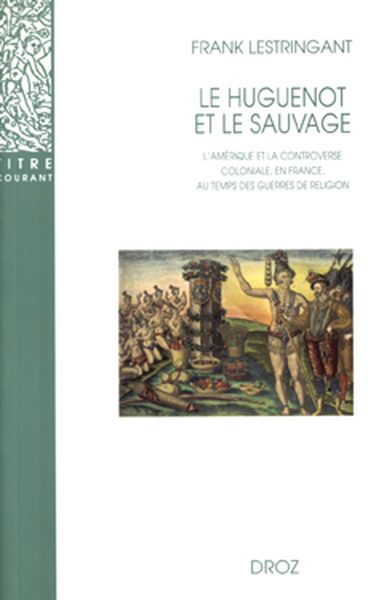 Frank LESTRINGANT, Le Huguenot et le sauvage : L'Amérique et la controverse coloniale, en France, au temps des guerres de Religion (1555-1589). Troisième édition revue et augmentée, Genève, Droz, 2022.
Frank LESTRINGANT, Le Huguenot et le sauvage : L'Amérique et la controverse coloniale, en France, au temps des guerres de Religion (1555-1589). Troisième édition revue et augmentée, Genève, Droz, 2022.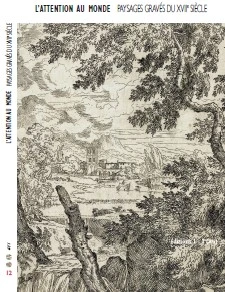 L'Attention au monde : Paysages gravés du XVIIe siècle, catalogue d'exposition (Rouen, Maison de l'Université, 29 septembre-4 novembre 2022), avec des essais de H. Brunon, F. Cousinié, A. Domènech, S. Hilaire, L. Pérez-Oramas, Paris, éd. 1 :1, 2022, 132 pages, 20 euros (isbn : 979-10-97193-05-8)
L'Attention au monde : Paysages gravés du XVIIe siècle, catalogue d'exposition (Rouen, Maison de l'Université, 29 septembre-4 novembre 2022), avec des essais de H. Brunon, F. Cousinié, A. Domènech, S. Hilaire, L. Pérez-Oramas, Paris, éd. 1 :1, 2022, 132 pages, 20 euros (isbn : 979-10-97193-05-8)